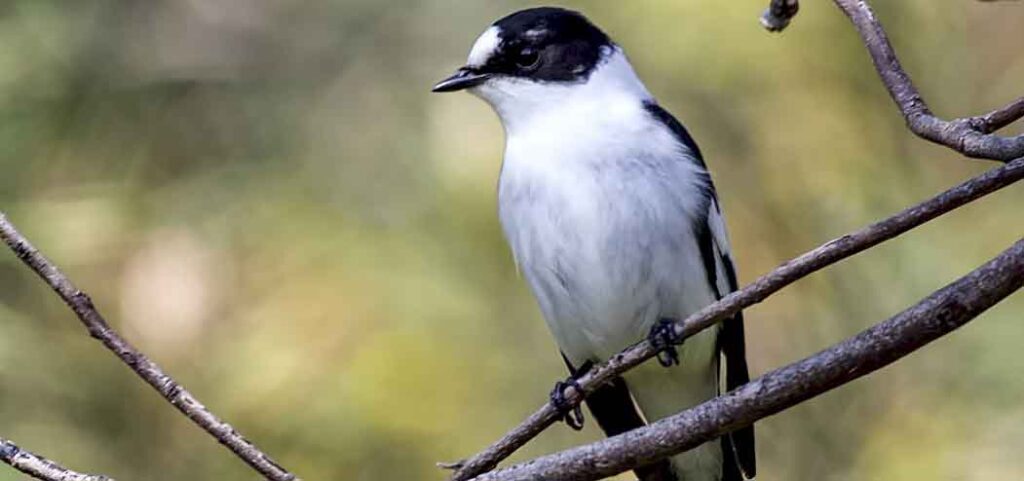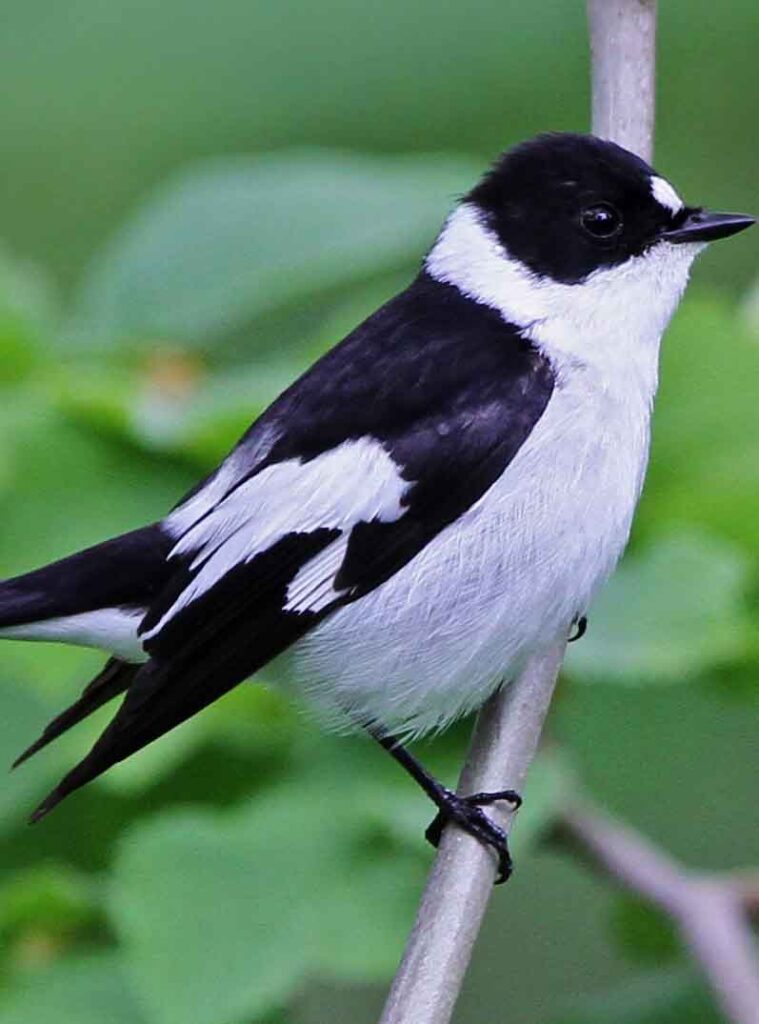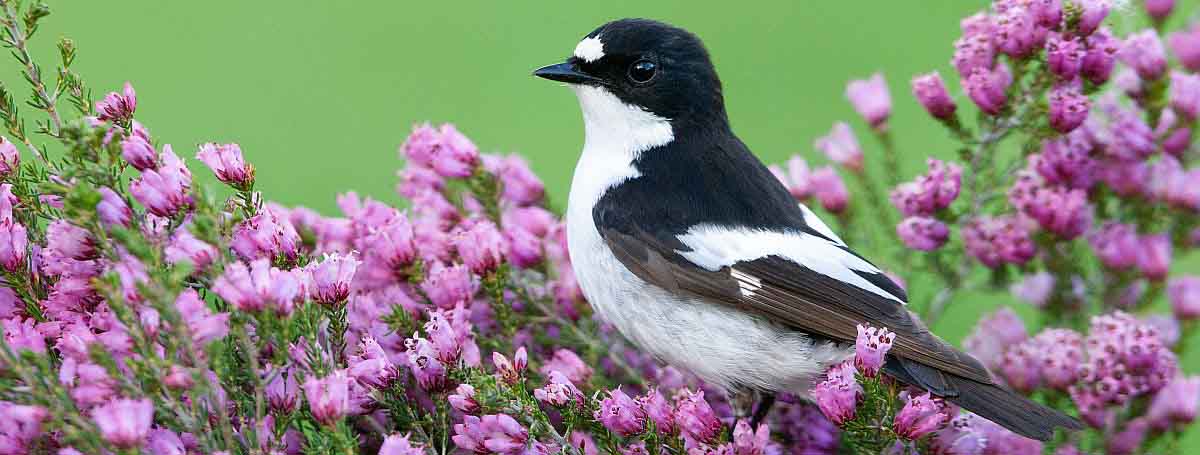Description
The Collared Flycatcher is a small passerine bird that belongs to the Old World flycatcher family. It is known for its distinct collar of black feathers around its neck, which gives it its name. The male Collared Flycatcher has a black head, wings, and tail, with a white throat and under parts. Its back is a striking shade of slate blue, and it has a small white patch on its forehead. The female, on the other hand, has a more subdued coloration, with a brownish-gray head and back, and a lighter throat and under parts.
These birds are migratory, breeding in Europe and wintering in Africa. During the breeding season, they can be found in woodlands and forests, where they build their nests in tree cavities or old woodpecker holes. They are known for their agile flight and their habit of catching insects on the wing, which is where they get their name. They are also adept at catching insects from the ground or from foliage.

A Highly Territorial Bird
The Collared Flycatcher is a highly territorial bird, and the male will defend its territory vigorously against intruders. They are also known for their distinctive song, which is a series of melodious whistles and trills. The song is used to attract a mate and to establish territory boundaries.
During the winter months, the Collared Flycatcher migrates to sub-Saharan Africa, where it spends its time in woodlands and savannas. They are often found in mixed-species flocks with other migratory birds, as they forage for insects and other invertebrates.
A Monogamous Species
The Collared Flycatcher is a monogamous species, and pairs will often return to the same breeding territory year after year. The female will lay a clutch of 4-6 eggs, which she will incubate for about two weeks. Both parents will then take turns feeding the chicks until they are ready to leave the nest, usually about two weeks after hatching.
Threats to its Survival Due Loss of Habitat
Like many migratory birds, the Collared Flycatcher faces a number of threats to its survival. Loss of habitat due to deforestation and urbanization is a

major concern, as is the use of pesticides and other chemicals that can harm the birds and their food sources. Climate change is also a significant threat, as it can disrupt the timing of migration and breeding, as well as the availability of food.

Conservation Efforts
Conservation efforts are underway to protect the Collared Flycatcher and other migratory birds. These efforts include the creation of protected areas and the promotion of sustainable forestry practices. By working to preserve the habitats that these birds depend on, we can help ensure that future generations will be able to enjoy the sight and sound of these beautiful birds in the wild. You can see this bird in several places like Timi, Kouklia in Paphos, Lady’s Mile and Zakaki Marsh in Limassol.


